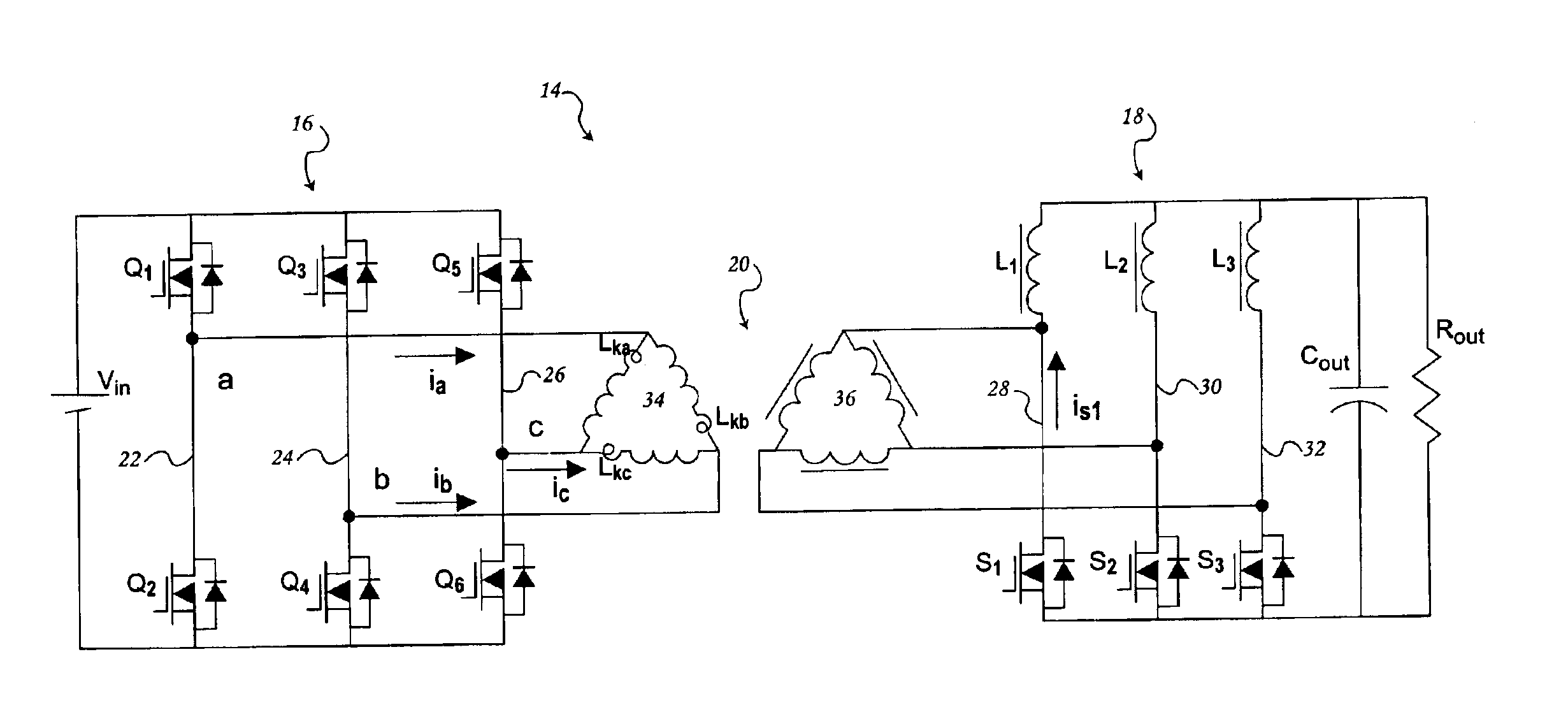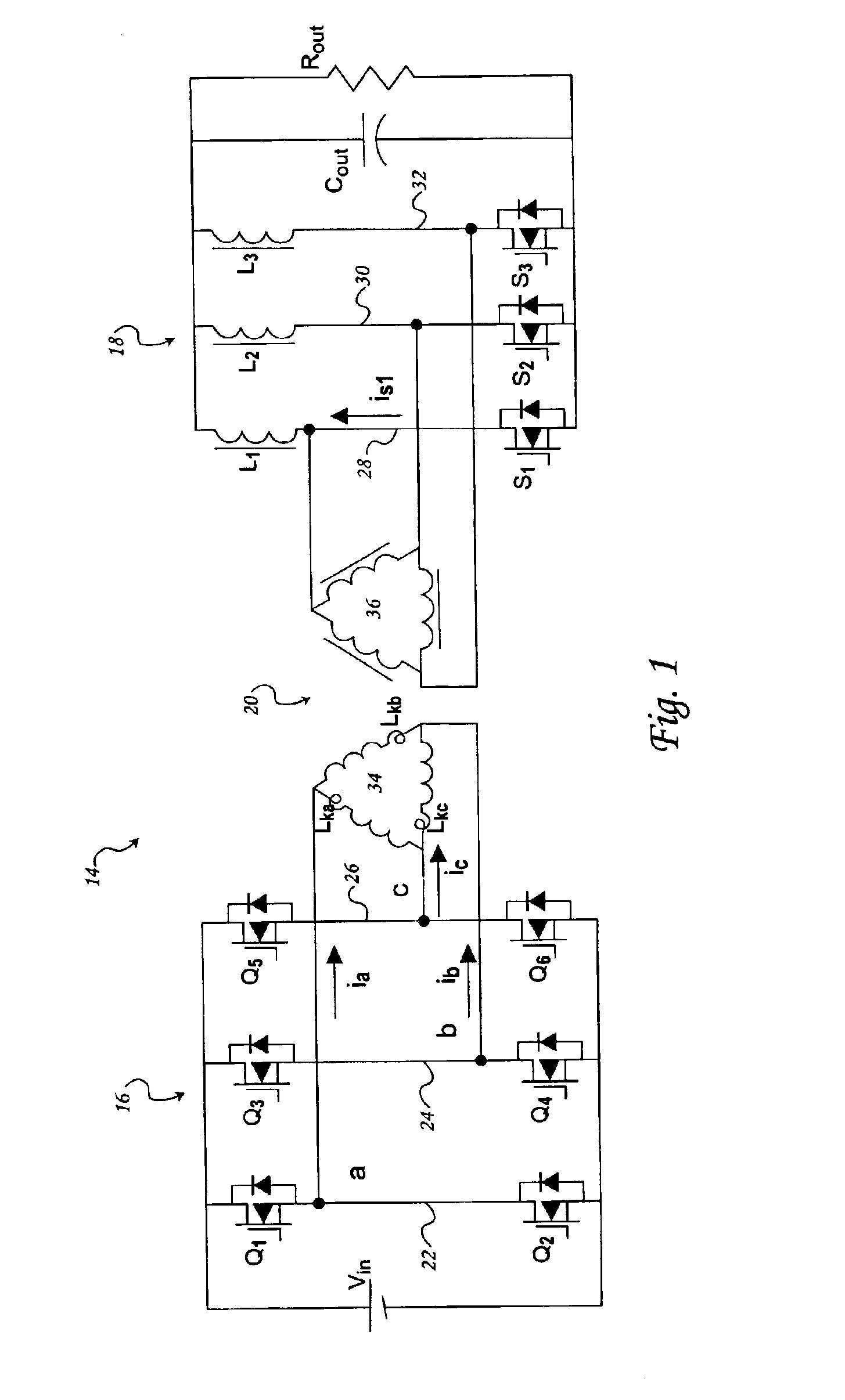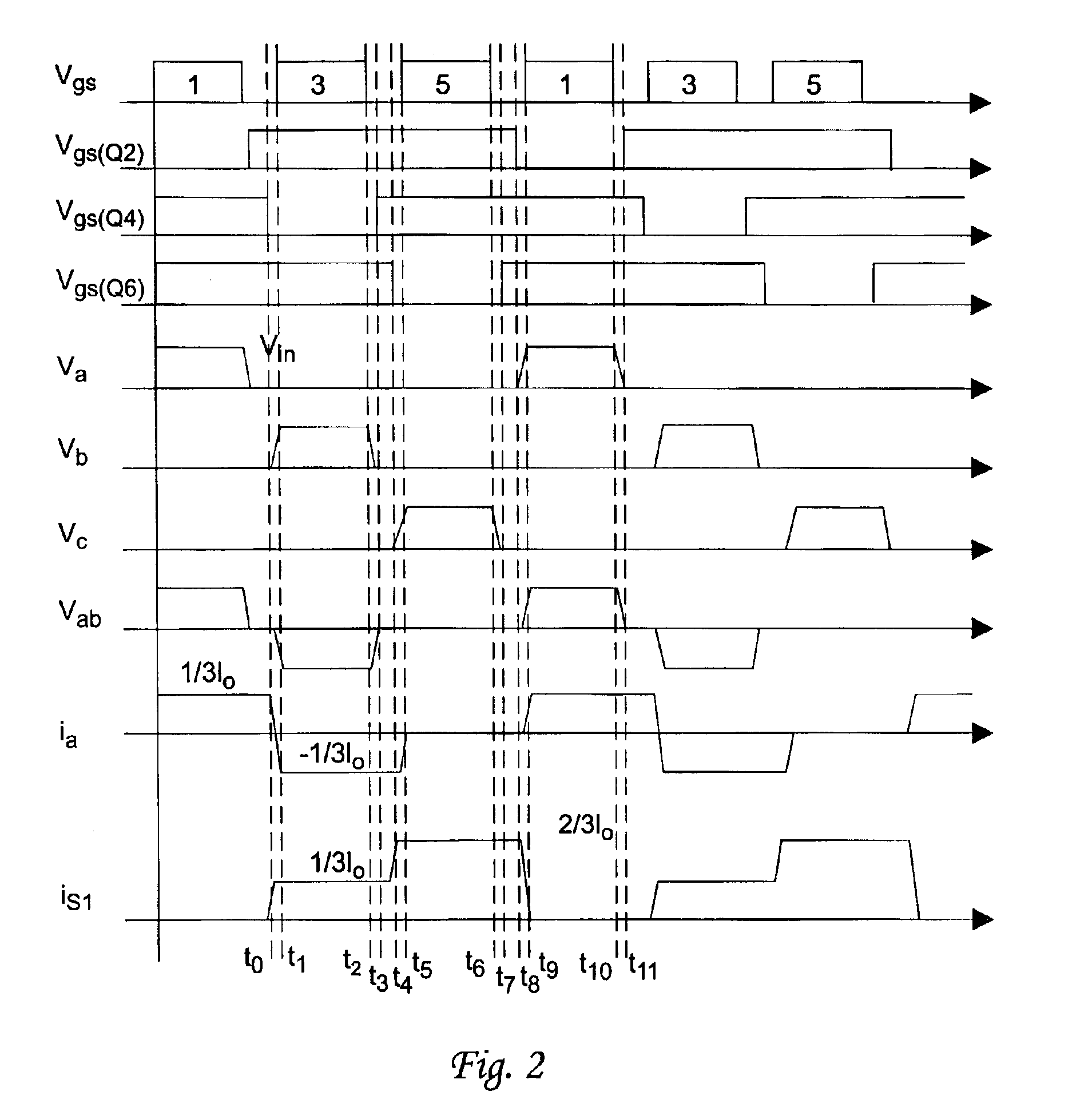Multi-phase interleaving isolated DC/DC converter
a converter and multi-phase technology, applied in the field of dc/dc converters, can solve the problems of increasing the conduction loss of conventional converters, increasing the cost and footprint, and severe thermal problems, so as to reduce the conduction loss of synchronous rectifier and transformer winding, the power density of the converter can be greatly increased, and the output current and power density increase
- Summary
- Abstract
- Description
- Claims
- Application Information
AI Technical Summary
Benefits of technology
Problems solved by technology
Method used
Image
Examples
Embodiment Construction
[0032]The circuit diagram for a zero-voltage switch (ZVS) current tripler DC / DC converter 14, according to the present invention, is depicted in FIG. 1. The converter of the present invention converts an input voltage into an output voltage. In order to simplify the analysis of the converter, it is assumed that the circuit operation is in steady state, the output filter inductors are large enough to be considered a current source, all devices are ideal, and the transformer magnetizing current is neglected.
[0033]The DC / DC converter 14 has a transformer 20, a primary side 16 connected to a power source, denoted Vin, and a secondary side 18 connected to an output capacitor Cout and an output load, denoted Rout. Together, the output capacitor Cout and the output load Rout are referred to herein as an output filter. The transformer 20 has a primary winding 34 connected to the primary side 16 and a secondary winding 36 connected to the secondary side 18. Each winding is a tertiary winding...
PUM
 Login to View More
Login to View More Abstract
Description
Claims
Application Information
 Login to View More
Login to View More - R&D
- Intellectual Property
- Life Sciences
- Materials
- Tech Scout
- Unparalleled Data Quality
- Higher Quality Content
- 60% Fewer Hallucinations
Browse by: Latest US Patents, China's latest patents, Technical Efficacy Thesaurus, Application Domain, Technology Topic, Popular Technical Reports.
© 2025 PatSnap. All rights reserved.Legal|Privacy policy|Modern Slavery Act Transparency Statement|Sitemap|About US| Contact US: help@patsnap.com



